The Video Coat is a color TV set built into a lab coat. It is a 160x120 pixel color LED display, built on flex boards.
This television set displays regular NTSC video. I designed and built it for Burning Man.
Here it is, displaying my hero Homer Simpson:
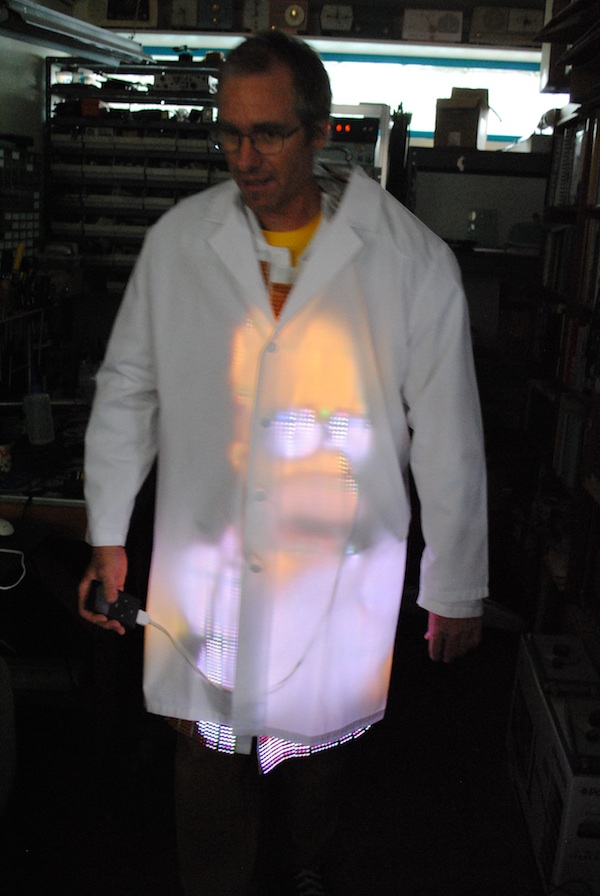
The display wraps all the way around the back.
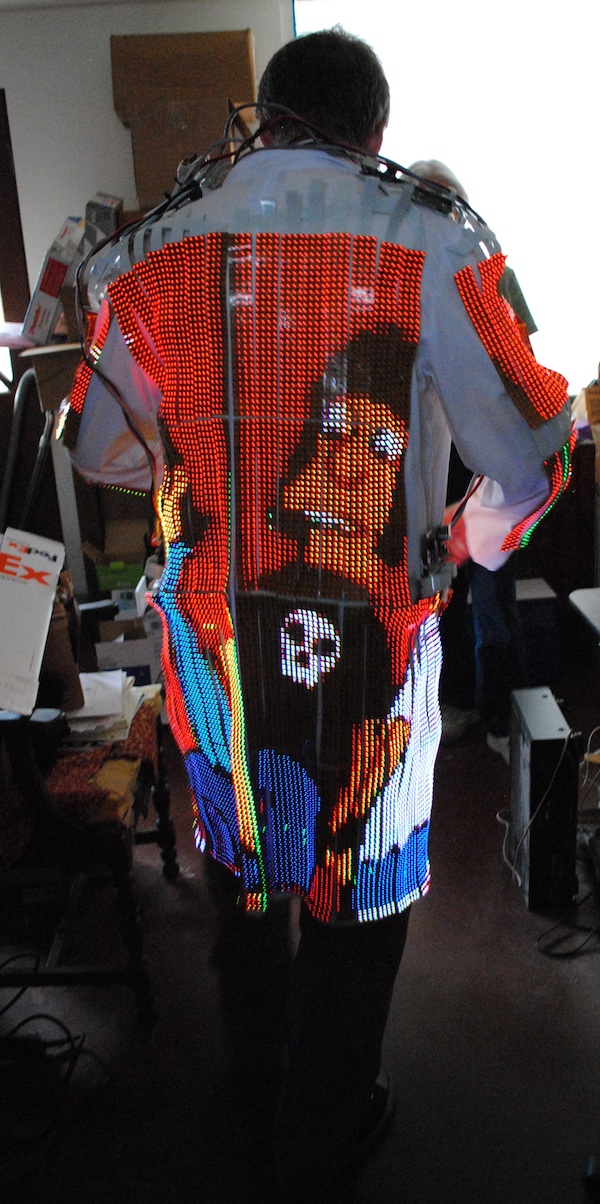
Even the sleeves provide viewing enjoyment.
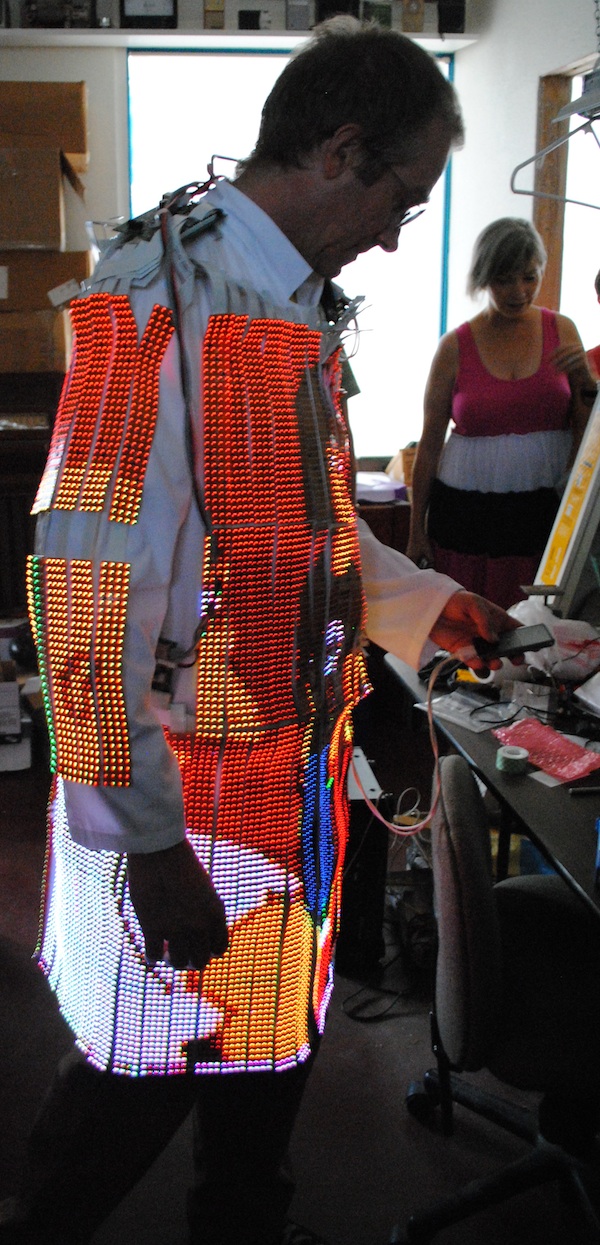
The TV is driven by circuit boards on the shoulders and hips.
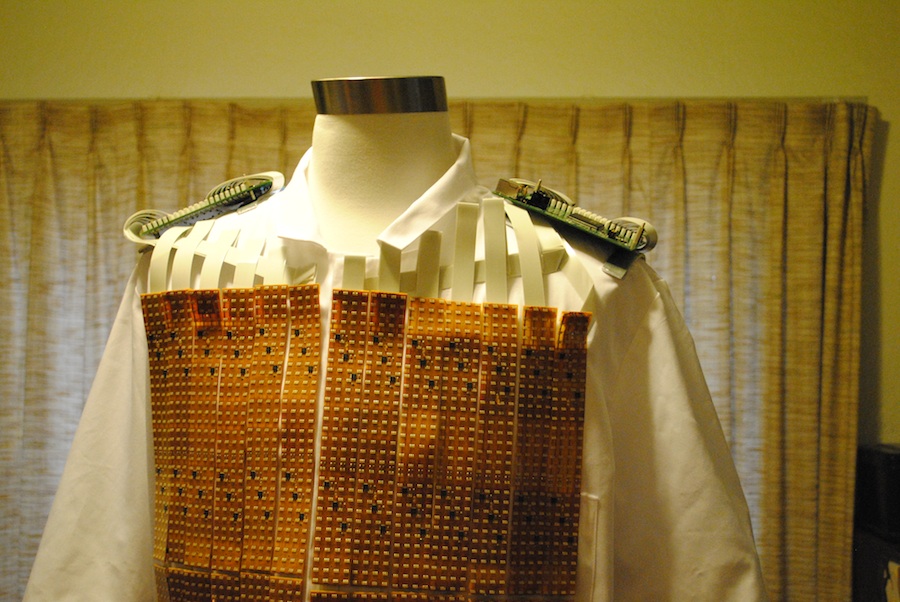
The display strips are narrow flex boards, joined by flat flex cables.
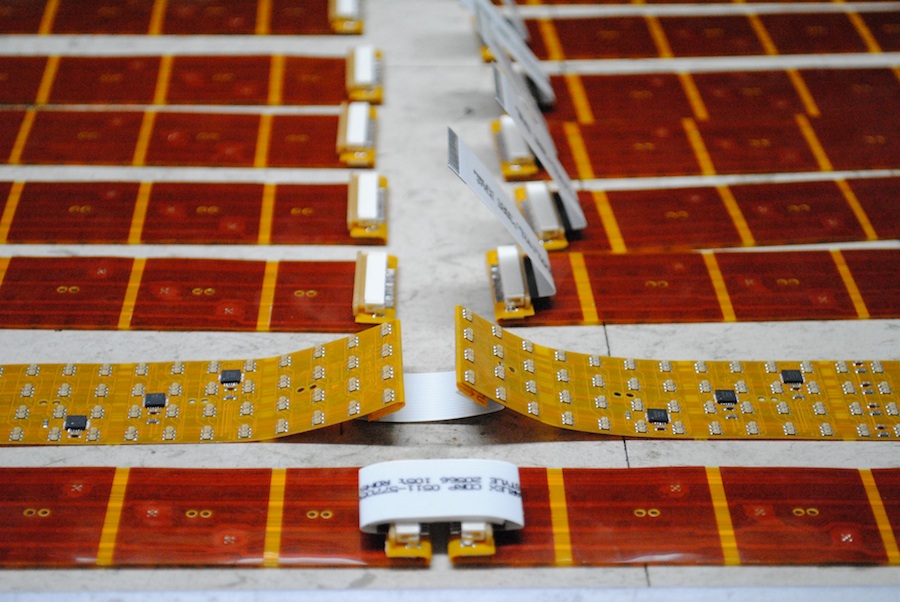
Each display strip has six Allegro A6282 chips in tiny QFN packages, tucked in between the clusters of three 0603 chip LEDs. It barely fits, but it fits. The display strips have four columns, each of which has a separate power bus. So four LEDs are driven by the same LED driver pin. This cuts down the chip count, compared to outdoor signs which require a chip driver output for every LED. I can do this because it's a nighttime/indoor display. Even so, the 1,000 LED driver chips dissipate 50 Watts in total. That's half the power used by the coat.
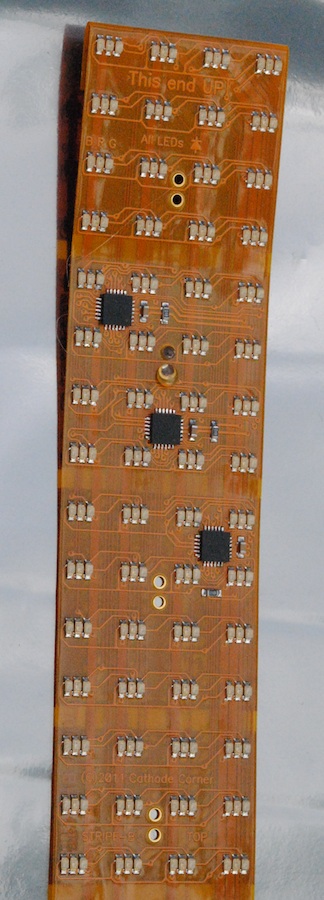
The back of the board has Kapton stiffeners arranged in squares to make it flexible, yet provide support for the chips. The copper on a flex board is a bit delicate, so this was done to prevent trouble from repeated flexing. The boards were fabricated and assembled at Circuits Unlimited in Carson, CA. They did a great job.

The strips are all hot-glued to the coat, and wired with FFC cable and plenty of double-sided sticky tape.
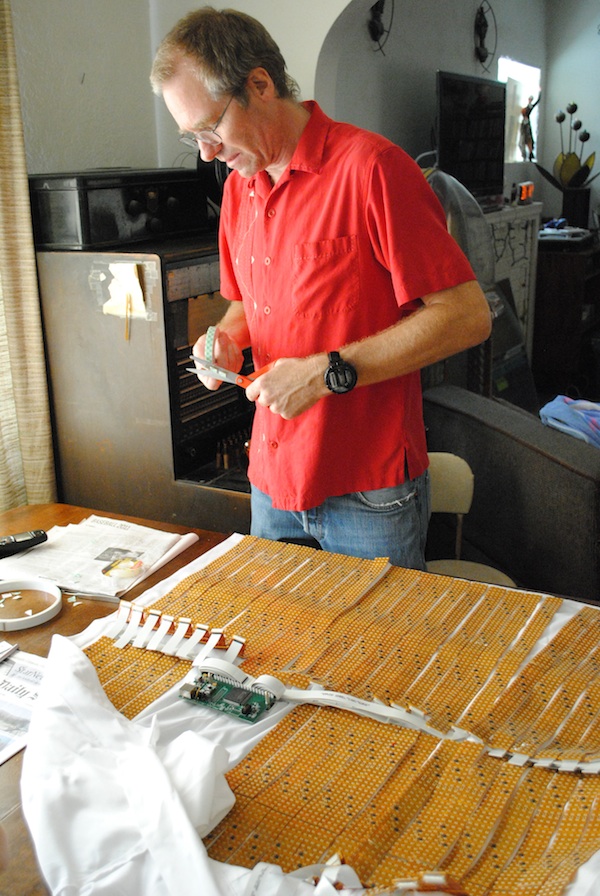
The digitizer board has digital processing circuitry and real knobs for color, brightness etc. A Xilinx FPGA converts the YCrCb signal from the TVP5154 video digitizer into four RGB serial data streams. There is an NTSC video input on an RCA jack, and a USB jack to charge the video iPod that plays the source material. Ethernet cables carry the LVDS serial data to the scan boards.
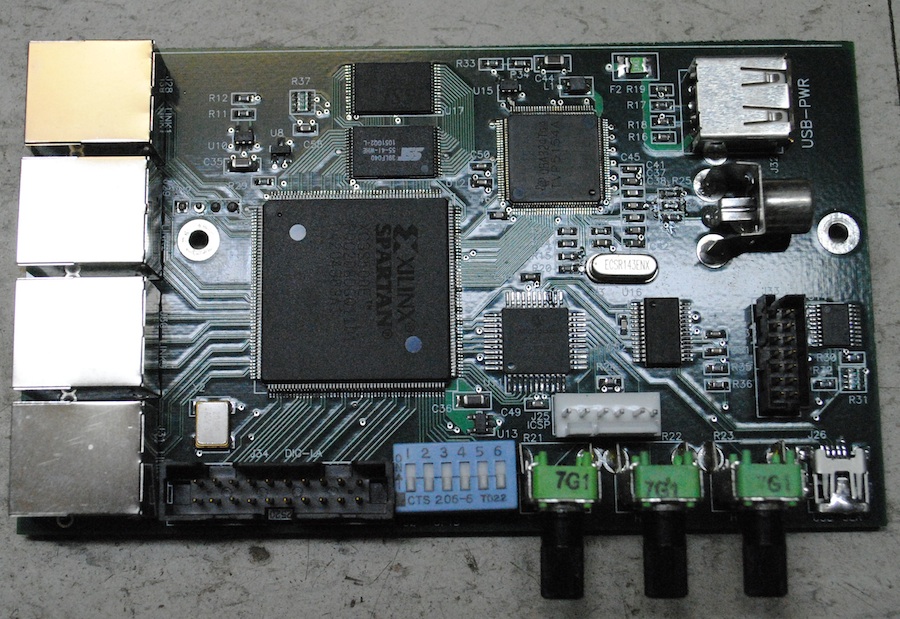
The scan boards each have an FPGA, DC-DC converters and some connectors. There are four column driver transistors to reduce the number of LED driver chips needed. The application engineer at Allegro says the chips aren't designed to do that, but I have a few tricks up my sleeve.
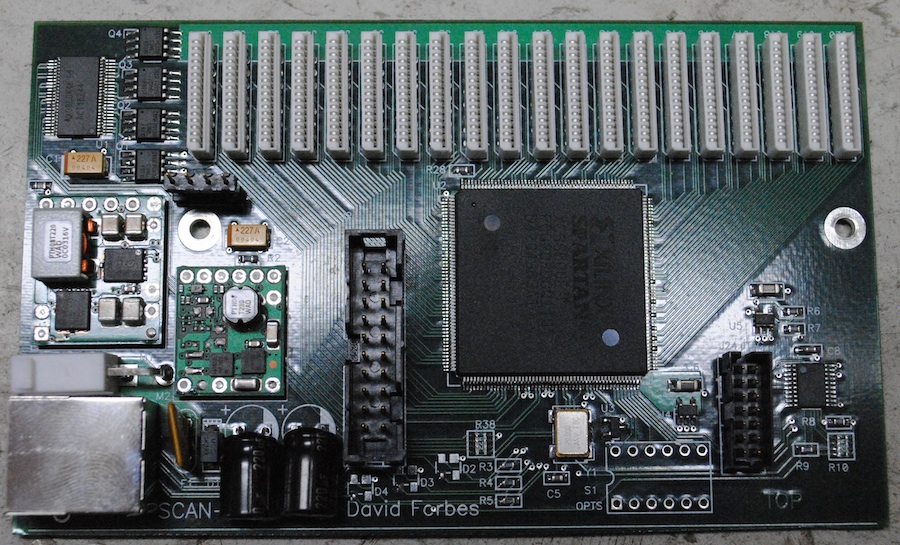
Power is supplied by two 11.1V, 5 Amp-hour R/C LiPo packs. Battery run time is about an hour.
I spent six months and $20,000 building this gizmo. I had to sell a lot of Nixie watches to raise the funds. Thanks, Woz!
Still photos by Terry Nordbrock. Video by Chris Wagganer.
This page updated July 12 and © 2011 by David Forbes
via cathodecorner
via geekologie
No comments:
Post a Comment